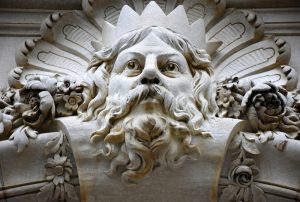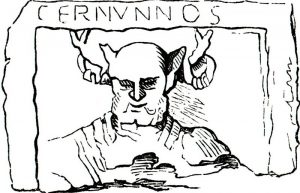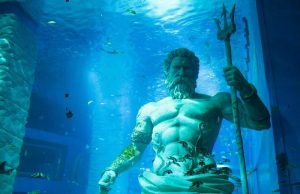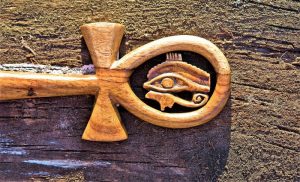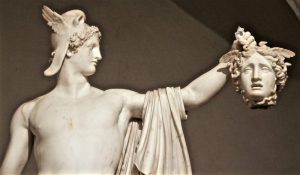Hephaestus
Hephaestus was the god of fire, the god of metallurgy, stone masonry, forges and of sculpture. He was the son of Zeus and Hera and married Aphrodite for Zeus, with the aim of avoiding a war of the gods fighting for her hand. He was a blacksmith god, made all the weapons for Olympus and acted as a blacksmith of the gods. He had his own palace within Olympus, where he made many ingenious inventions and metalwork. Hephaestus' ugly appearance was the reason Zeus chose him to marry Aphrodite, but despite this, she had many adventures with other gods and men.
Who was Hephaestus?
Hephaestus was the god of fire, of metals and forge, he was the protector of blacksmiths, craftsmen and sculptors. He was known as the divine blacksmith of Olympus and made weapons and shields for the gods and heroes of the time.
Characteristics
Among its most representative characteristics we can mention the following:
- Physically he was a deformed
- He was represented by an incandescent iron mallet in his hand.
- He is considered the lord of the igneous
- The volcanoes were his workshops and he worked helped by the Cyclops.
- He was the worker of the immortals because he made their homes, furniture and weapons.
- His workshop was located under a volcano, and the work he did inside it caused eruptions.
- In art, it is represented in an inclined position on an anvil or walking with the help of a cane.
- He was worshipped mainly in Athens, where he had a temple.
- He made the shield for which Athena is known to carry.
What does Hephaestus represents?
Hephaestus is the representation of fire and metal forging. It represented blacksmiths who worked with metal, craftsmen and sculptors who worked with metals and metallurgy.
Biography
Hephaestus was the son of Hera, who apparently begot him alone or through Zeus’ intervention, there is still no concrete evidence of this fact. It was well known in ancient times because of its ungrateful appearance. According to history, his mother Hera, when she saw him so ugly, wanted to hide him from the rest of the world and threw him out of Olympus. There is a version that says that, during a fight between his mother and Zeus, Hephaestus interfered in order to help his mother and Zeus took him by one foot throwing him out of Olympus, where he fell on an island called Lemnos, being lame for this reason.
After Hephaestus was expelled from Olympus, he was picked up by Thetis and Eurynome, who took care of him and protected him on the island of Lemnos, a place that was his home and saw him develop as one of the best artisans of the gods. Sometime later he made a magic lathe for Hera, his mother, with the aim of getting revenge, and when she sat down, she was trapped without being able to get up. To free her, Dionysus got Hephaestus drunk and took him back to Olympus, where under certain conditions, Hephaestus agreed to free her.
He married Aphrodite, the goddess of love, who was repeatedly unfaithful to him.
Children
Hephaestus was always rejected by Aphrodite, which is why he had no offspring with her. According to Apollodorus, there was a moment when Hephaestus tried to rape Athena, but he could not and his semen fell on Athena’s leg who cleaned it with a piece of wool that she threw, when this piece of wool touched the ground, it became a child, who was her son. On some occasions, Hephaestus has been seen as the father of Etna of the Palicos, but this is uncertain. He had children known as daimones with the nymph Cabiro, who inhabited the island of Samothrace, but their names are not known. He was the father of the following mortals:
- Ardalus, inventor of the flute
- Caco, giant barbarian.
- Cecrope, king of Athens
- Certion
- Philemon, musician
- Palamon
- Peripherals
- Pilio
Powers
He was very skillful in manufacturing weapons and maneuvering them because he was very agile. He had a mechanical attitude and a fairly widespread skill, possessed great magnetic intuition and had pyrokinesis, which was considered to be the ability to dominate and create fire.
Forge of Hephaestus
According to the Iliad, the forge of Hephaestus was located on Olympus Mount, although it could also be found in the volcanic heart of the Aegean island of Lemnos. Etna was a volcano greatly associated with Hephaestus. He made many utensils for the gods and metal objects with powers in Greek mythology, in addition to be the forger of Zeus’ rays.
Creations
He made all the weapons of the Olympian gods, created anvils, hammers and claws. He made the helmet and sandals of Hermes, the aegis of Zeus, the belt of Aphrodite and the armor of Achilles. He also created the bronze castanets of Heracles, the chariot of Helios, the bow and arrows of Eros and the invisibility helmet of Hades.
Hephaestus temple
The temple of Hephaestus is known as Hephaestion, and is a Greek temple located northwest of the Athens agora in Agoreo. In that place, worship was given to the god of metallurgy. It is sometimes called Teseion.
Curiosities
- He was thrown by his mother to Olympus for his ugly appearance.
- Despite his physical appearance, he had beautiful women around him.
- He was a kind and peace-loving god.
How to cite this article?
Briceño V., Gabriela. (2019). Hephaestus. Recovered on 3 January, 2025, de Euston96: https://www.euston96.com/en/hephaestus/




